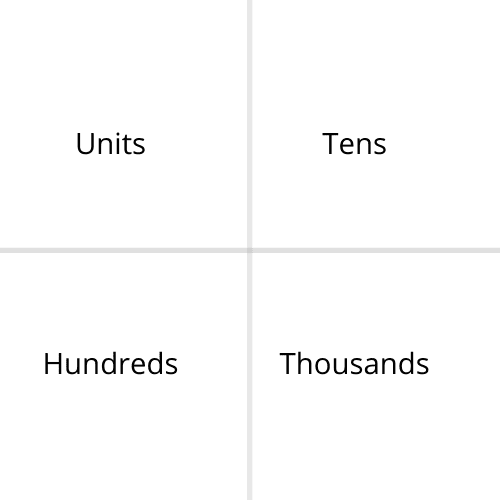Virtually the entire world uses the Hindu-Arabic numeral system to represent digits in base-10 and perform algebra. You probably also heard of the Roman numeral system, which lacks a symbol for zero, and the placement of numerals within a number can sometimes indicate subtraction rather than addition. Throughout history, however, people have employed all sorts of systems, most of which have been forever forgotten. These include the intriguing Cistercian numbers used by monks in the Middle Ages, but also Nazis and occultists in the 20th century.

Cistercian numbers are definitely very odd, but once you grasp the logic behind them, they can be quite fun to use if you’re keen on using a ‘coded’ language. These numbers are represented by nine appendages to vertical stems that each correspond to units, tens, hundreds, and thousands.

Each of the four different orientations (1-9, 10-99, 100-999, 1000-9999) can be represented by changing the coordinates. So, practically, changing the coordinate of each ligature — either by rotating or mirroring them — can alter the digit from being a unit to a thousand. When the appendages are combined on a single stem, you get a cipher representing any number from 1 to 9999.

This peculiar number-notation was invented in the late 13th century by Cistercian monks, near the border region between France and Belgium. For two centuries, the number system was used by monks belonging to the order across all of Europe as an alternative to the well-known Roman numerals and the ‘novel’ Hindu-Arabic numerals, the latter of which were just beginning to get adopted at the time.
The monks used this system to represent year-numbers in dates, and to number staves of music and pages of manuscripts, but it also proved useful outside of the monasteries. We know the numerical notation was used in astronomy because Cistercian numerals were etched on astrolabes — a handheld medieval astronomical instrument — and used for astronomical tables compiled in Salamanca in the late 15th century.
But since Cistercian numbers are useful for representing only compact numbers up to 9999, as well as due to the fact that they were challenging to print, the system soon fell out of grace in favor of the much more flexible Hindu-Arabic numbering system. However, Cistercian ciphers would survive in use as secret codes. The Freemasons in Paris adopted it in 1780, as well as occultists and Nazis who re-discovered the Cistercian numeral system in the early 20th century.
This website has a nifty online tool that converts Arabic numbers into Cistercian Monks numbers.
Was this helpful?



